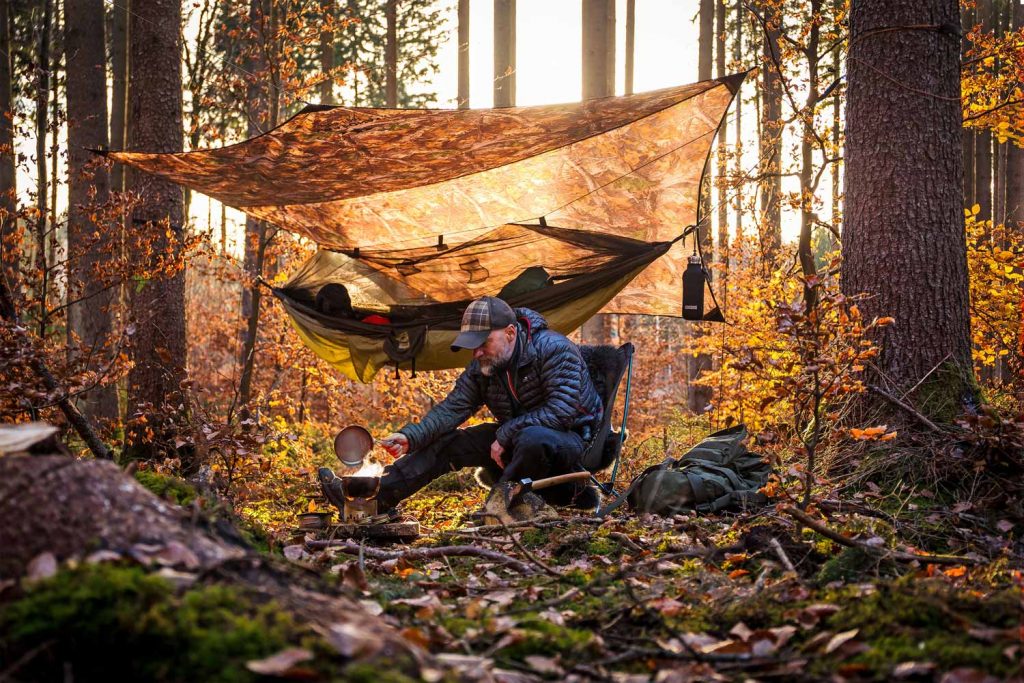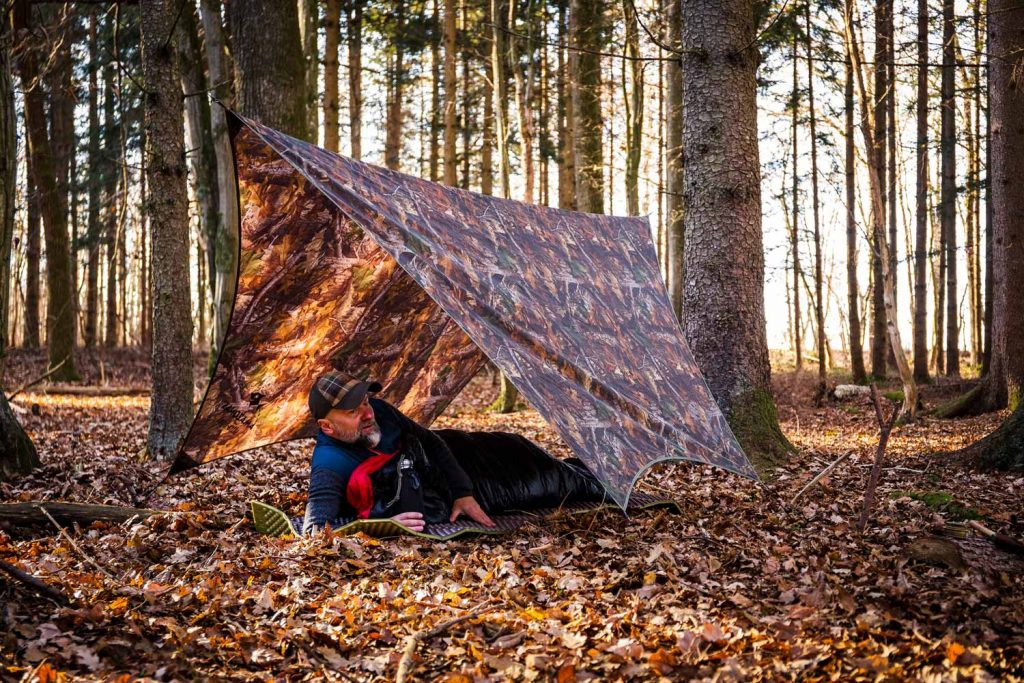If you love camping or spending time in the open but are unsure how to keep a tarp from collecting water, you have come to the right place. In this article, I will explain in great detail how you can keep your tarp from collecting water and, therefore, keep all of your belongings dry and secure.
So, if this sounds like the thing you came for, ensure to read this article to the end.

How to Keep a Tarp From Collecting Water
Camping can be one of the most joyful and relaxing experiences in the world, up until the rain comes. But, with the right techniques, this does not always have to be the case. That’s why, in this article, I will share some expert advice and tips on how to keep a tarp from collecting water so that the next time unexpected rain hits your campground, you will not have to worry about a thing.
In continuation of this article, we will take a look at some of the most effective methods that keep a tarp from collecting water. By carefully following the in-depth instructions for each of the methods, I do not doubt that in no time, you will become a professional in protecting your camp from rain, so let’s begin.
Setup the tarp with the ridgeline technique
One of the most common and effective techniques to keep a tarp from collecting water is to set up the tarp with the ridgeline technique. This method is amazing because it is super straightforward, especially if your tarp comes with riser attachment points. You will be required to have minimal hardware, meaning anyone can do it regardless of their bushcraft skills.
Moreover, as the ridgeline technique is in the shape of a roof, it fits greatly over a hammock, keeping you entirely protected even from the heaviest rains.
To do the ridgeline technique successfully, you will need to follow the following instructions:
At-home preparations
- The first thing you need to do is to prep your tarp at home. You can do this by threading your line following the ridge rises on the tarp. Then, take a clipper and attach it to one end of your line and make sure to tie a prusik knot around the halfway point of the line with another clipper attached to it.
When you do this, and your tarp and line are ready, ensure to pack the tarp into your tarp bag while leaving the two clippers out of it, on the top, for a swift tarp setup.
Related: What Is a Tarp Made Of?
Setting up the tarp on the campsite
- After doing your prep at home, setting up the tarp to stop it from collecting water is extremely straightforward. First, you will need to investigate your surroundings carefully and find two trees with decent height and especially a decent room between them so that you can fit your tarp perfectly.
- Then, choose the desired height and start assembling. First, run the primary clipper (the one without the prusik knot) around the first tree and then clip it back around the ridgeline that you have previously prepared. After doing so, you will need to attach this clipper to the center point of the tarp.
- When you successfully assemble and establish the first clipper, you need to work your way through the length of the ridgeline until reaching the other side of the tarp. Then, carefully slide the prusik knot along the entire line so that you have enough line, and wrap it around the second tree on the opposite side.
- Finally, clip the line into the center point of this side of your tarp and then pull the prusik knot towards the tree to tighten and stretch the tarp over your camp or hammock.
After setting up the tarp
- When you are done with setting up the tarp by following the ridgeline technique, you may continue working the line around the trees so that you position the tarp more left or right, depending on your requirements and needs.

Pitch your tarp tight
Although it sounds obvious, if your tarp is loose or if there are spots where it is sagging, the likelihood of collecting water in it is high. Therefore, while assembling your tarp, you need to make sure that you pitch it tight and stretch it out so that the water simply just slides off of it.
Another thing you need to remember here is that as you should not tighten the cords loosely, you should also not tighten them too tightly because they or the tarp might rip apart and cause even greater damage.
Therefore I always recommend tightening the cords until the tarp is straight and it has a certain resistance to it but not to the point where when you poke it with your finger, you cannot make a dent in it.
Pitch two corners of your tarp higher than the others
Another fantastic technique to keep a tarp from collecting water is to place the tarp in a way where the front side is lower than the backside. You can do this by using two different length poles or sticks or simply tightening the back two corners of the tarp much higher than the front two corners. This way, the rainwater will simply slide off the tarp in a natural way without getting in under the tarp and destroying your stuff.
Use water repellent
By spraying your tarp with a water repellent, you will maximize the effect of some of the two techniques above and increase your tarp’s water-resistance feature. Use the water repellent once or twice a month by generously applying it all over the tarp in a thick coat.
Angle the tarp in the same direction as the wind
Finally, but equally important is to try and angle the tarp in the same direction as the wind. By doing this technique, the wind will simply push off the water to naturally slide down your tarp, making it easier for the water to go down, whereas if you do the opposite, the wind will push the rainwater back on top of your tarp.
Read more: How to Build a Waterproof Shelter in the Woods
Conclusion
If you were unsure how to keep a tarp from collecting water, I believe that with the help of this article, you got your question answered. I made sure to include the most common tactics and methods for keeping the water out of your tarp so that you can fully enjoy your camping experience without anything ruining it.
